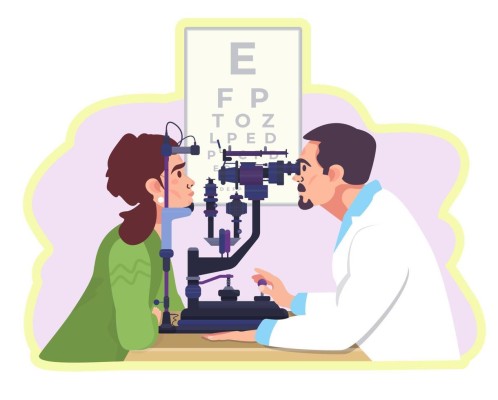
Low Vision
Low vision is a condition where an individual experiences significant visual impairment that cannot be fully corrected with glasses, contact lenses, or medical interventions. It goes beyond typical age-related vision changes or minor visual impairments, impacting a person’s ability to perform everyday activities and leading to a need for specialized adaptations or supports.
Understanding Low Vision
1. Definition and Causes:
Low vision refers to a level of visual impairment that remains even after corrective measures have been applied. Common causes include:
- Age-related macular degeneration (AMD): A condition affecting the central part of the retina (the macula), leading to loss of central vision.
- Glaucoma: Damage to the optic nerve often associated with elevated eye pressure, affecting peripheral vision.
- Diabetic retinopathy: Damage to blood vessels in the retina caused by diabetes, leading to vision loss.
- Retinitis pigmentosa: A group of genetic disorders causing progressive degeneration of the retina, impacting night vision and peripheral vision.
- Cataracts: Clouding of the lens of the eye that can obstruct vision, though usually correctable with surgery.
2. Types of Vision Loss:
Low vision can manifest in various ways, including:
- Central vision loss: Difficulty seeing details directly in front of you, such as reading or recognizing faces.
- Peripheral vision loss: Difficulty seeing objects outside of your direct line of sight, which can affect mobility and spatial awareness.
- Reduced contrast sensitivity: Difficulty distinguishing between objects and their backgrounds, especially in low-light conditions.
- Blurred vision: Difficulty seeing clearly despite corrective lenses.
3. Impact on Daily Life:
Low vision can significantly affect various aspects of daily life, such as:
- Reading and Writing: Tasks like reading books, newspapers, or writing can become challenging without magnification or specialized tools.
- Mobility: Navigating through environments, especially unfamiliar ones, can be difficult. People with low vision might require adaptive techniques or assistance.
- Social Interaction: Recognizing faces or reading social cues can be challenging, impacting communication and social interactions.
4. Adaptations and Aids:
Individuals with low vision often use a variety of tools and strategies to enhance their quality of life:
- Magnification devices: Handheld magnifiers, magnifying glasses, or electronic magnifiers that enlarge text and images.
- Adaptive technology: Screen readers, voice-activated software, and computer programs designed to assist with reading and information processing.
- Lighting adjustments: Specialized lighting to improve visibility and reduce glare.
- Braille: For those with severe vision loss, learning and using Braille can be essential for reading and writing.
5. Support and Rehabilitation:
Vision rehabilitation services can provide significant support, helping individuals adapt to vision loss and maximize their remaining sight. These services may include:
- Orientation and Mobility Training: Teaching techniques to navigate and travel safely.
- Occupational Therapy: Assisting with daily living skills and adaptive techniques.
- Counseling and Support Groups: Offering emotional support and practical advice from others with similar experiences.
6. Prevention and Management:
While some causes of low vision cannot be prevented, regular eye exams can help detect and manage conditions early. For conditions like diabetic retinopathy or AMD, timely treatment and lifestyle changes can help slow progression and preserve vision.
In summary, low vision is a challenging condition that affects many aspects of life. Through a combination of adaptive strategies, supportive technologies, and rehabilitation services, individuals with low vision can find ways to live independently and maintain a high quality of life.
